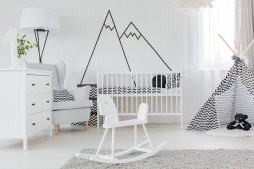Surround Sound vs. Sound Bar: Which Audio System is Right for You?
In today’s world of advanced technology, having a high-quality audio system is essential for an immersive entertainment experience. When it comes to choosing the right audio system, two popular options are surround sound and sound bars. Both of these systems have their own unique features and benefits. In this article, we will compare surround sound and sound bars to help you determine which one is right for you.
The Basics of Surround Sound
Surround sound systems are designed to create a realistic and immersive audio experience by using multiple speakers placed strategically around the room. These systems typically consist of a center speaker, front left and right speakers, rear left and right speakers, and a subwoofer for deep bass. The placement of these speakers creates a three-dimensional soundscape that envelops the listener.

One of the key advantages of surround sound is its ability to accurately reproduce directional sounds. This means that when watching movies or playing video games, you can hear sounds coming from specific directions, enhancing the overall realism of the audio. Additionally, surround sound systems are capable of delivering powerful and dynamic sound with rich depth.
The Advantages of Sound Bars
On the other hand, sound bars offer a more compact and streamlined solution compared to surround sound systems. A sound bar is a single unit that contains multiple speakers in one sleek design. It typically consists of left, center, and right speakers all housed within one long bar-shaped enclosure.
One major advantage of a sound bar is its simplicity in terms of setup and installation. Unlike surround sound systems that require careful placement and wiring for multiple speakers, a sound bar can be easily installed by placing it in front or below your TV or mounting it on the wall. This makes it an ideal choice for those who want great audio without dealing with complicated setup procedures.
Another benefit of a sound bar is its space-saving design. If you have limited space or prefer a minimalist aesthetic, a sound bar can be the perfect choice. It provides a clutter-free solution that doesn’t require multiple speakers scattered around the room.
Factors to Consider
When deciding between surround sound and a sound bar, there are several factors to consider. Firstly, consider the size and layout of your room. Surround sound systems are more suitable for larger rooms where you can properly position the speakers around the listener. Sound bars, on the other hand, work well in smaller spaces where space is limited.
Next, think about your audio preferences and usage. If you are an avid movie watcher or gamer who seeks an immersive experience with precise directional audio, surround sound may be the better choice for you. However, if you primarily use your audio system for casual TV watching and want a simple setup without sacrificing audio quality, a sound bar may be more suitable.
Budget is also an important consideration. Generally, surround sound systems tend to be more expensive due to the need for multiple speakers and additional wiring. Sound bars offer a more affordable option without compromising on audio quality.
Conclusion
Choosing between surround sound and a sound bar ultimately depends on your specific needs and preferences. Both options have their own advantages and limitations. If you have ample space, enjoy immersive audio experiences with precise directional sounds, and are willing to invest in a more complex setup, surround sound might be right for you. On the other hand, if simplicity, space-saving design, easy installation, and affordability are your top priorities without compromising on audio quality too much – then a sound bar might be the best fit. Consider these factors carefully before making your decision to ensure that you choose an audio system that will enhance your entertainment experience to its fullest potential.
This text was generated using a large language model, and select text has been reviewed and moderated for purposes such as readability.





